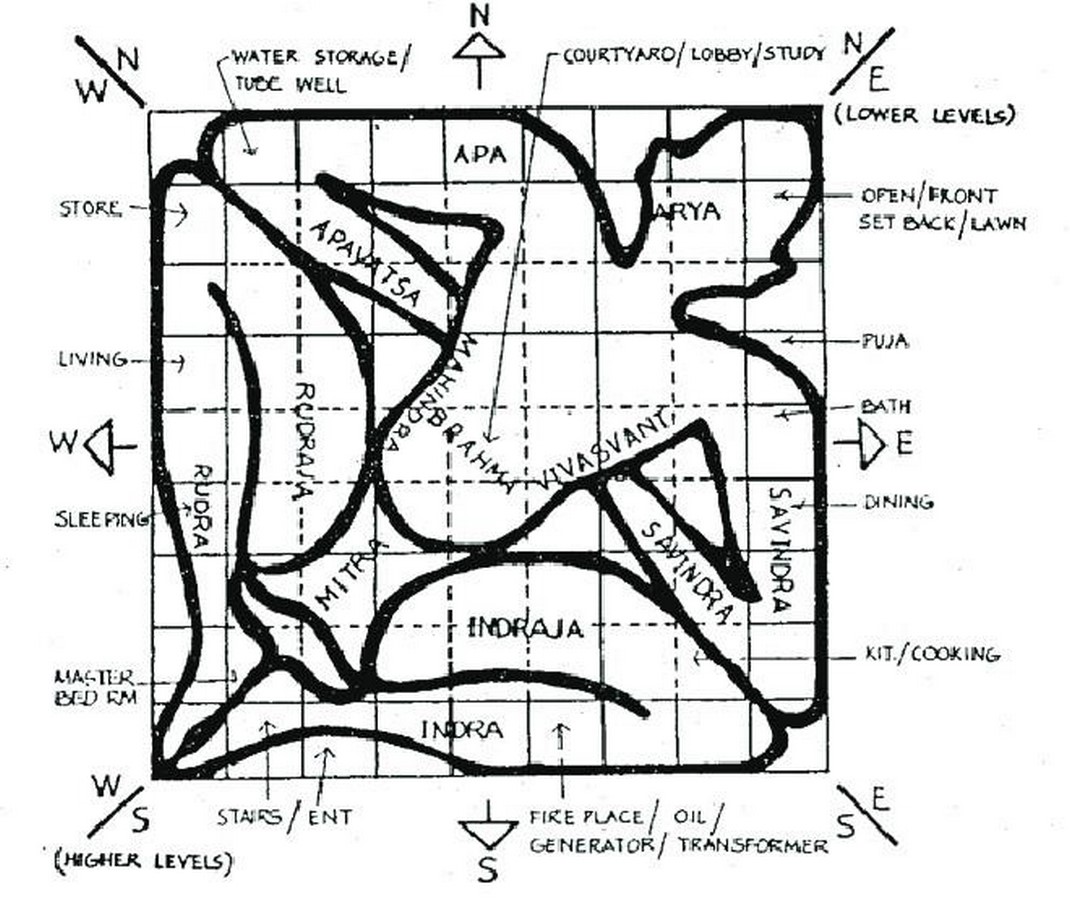
Vastu Shastra
Vastu Shastra, an ancient Indian architectural science, offers a holistic approach to designing and constructing spaces in harmony with natural forces to enhance well-being, prosperity, and happiness. Rooted in the Vedas, Vastu Shastra integrates elements of astrology, astronomy, and metaphysics to create balanced environments conducive to positive energy flow.
At its core, Vastu Shastra emphasizes the interconnectedness between humans and their surroundings, recognizing the impact of spatial arrangements on physical, mental, and spiritual health. The principles of Vastu Shastra guide the layout, orientation, and design of buildings, taking into account factors such as topography, climate, and magnetic fields.
One fundamental aspect of Vastu Shastra is directional alignment. Buildings are ideally oriented to face the cardinal directions—north, south, east, and west—to optimize the flow of energy. Each direction is associated with specific attributes and elements, influencing the purpose and function of different spaces within a structure.
Site selection plays a crucial role in Vastu-compliant construction. Factors such as soil quality, slope, and surrounding environment are considered when choosing a location for a building. A site with positive energy flow and minimal environmental disturbances is preferred, ensuring a foundation conducive to well-being.
Room placement within a building is meticulously planned according to Vastu principles. For instance, the master bedroom is typically situated in the southwest corner for stability and harmony, while the kitchen is positioned in the southeast to harness the element of fire. Proper room placement facilitates optimal energy circulation and supports the occupants’ health and prosperity.
Entrances and exits are strategically positioned to facilitate the smooth flow of energy. The main entrance, often referred to as the “mouth of the dwelling,” should be well-lit, inviting, and free from obstacles to allow positive energy to enter. Likewise, exits are placed thoughtfully to prevent energy depletion and maintain balance within the space.
The Five Elements
Earth, water, fire, air, and space—are integral to Vastu Shastra and are thoughtfully integrated into architectural design. Each element corresponds to a direction and has specific qualities that influence the atmosphere of a space. Balancing these elements within a building enhances harmony and vitality, fostering a sense of well-being for the occupants.
Colors and materials are carefully chosen in accordance with Vastu principles to create a harmonious environment. Certain colors are believed to evoke specific energies and emotions, while natural materials such as wood, stone, and clay are favored for their grounding and purifying properties. By selecting appropriate colors and materials, designers can enhance the positive energy flow within a space and promote overall wellness.
In cases where strict adherence to Vastu guidelines is not possible, remedies may be prescribed to mitigate negative influences. Remedies often involve the placement of objects, such as mirrors, crystals, or plants, to redirect energy or counterbalance unfavorable conditions.
While some perceive Vastu Shastra as a traditional belief system, its principles continue to influence contemporary architecture and design practices. Many architects and homeowners incorporate Vastu principles selectively, recognizing the value of creating spaces that support health, prosperity, and spiritual well-being. Whether followed strictly or adapted to modern sensibilities, Vastu Shastra remains a profound and enduring influence on the built environment.












